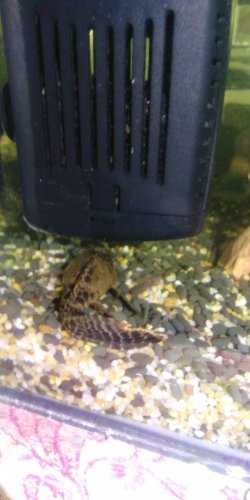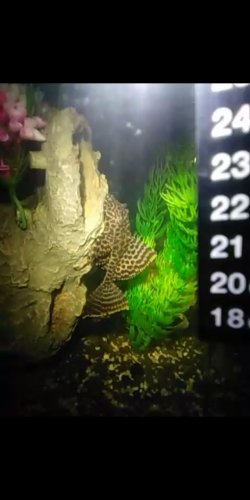Elliebellinie
New Member
Hi, I hope someone can help me. I bought my Pleco a couple of months ago and as soon as I had a good look at him at home he randomly loses his vibrant colours and his skin looks faded and just looks unwell then the next day he's back to normal and looks awesome. Then again, in a day or two he looks unwell. I'm really hoping someone will tell me that's it's just him doing his thing, camouflaging himself. Im 100 percent that his tank and water conditions and perfect for him so I'm at a loss as to what's going on.
The photo with him on the side of the rock was taken the day before I wrote this just to show how good he can look and the other two were the next day when he looked unwell. (Just to clarify, I really don't know if it's male or female, I just call him a he. sue me..)
Can someone point me in the right direction with this please. I'd appreciate any advice thank you.
The photo with him on the side of the rock was taken the day before I wrote this just to show how good he can look and the other two were the next day when he looked unwell. (Just to clarify, I really don't know if it's male or female, I just call him a he. sue me..)
Can someone point me in the right direction with this please. I'd appreciate any advice thank you.




